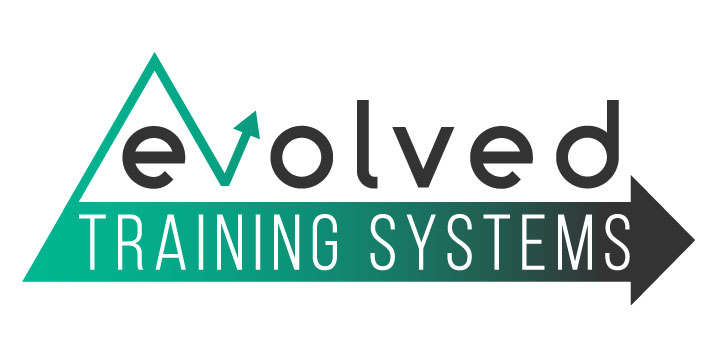In part 1 of the article, I discussed the Anaerobic system. I mentioned that anaerobic training is easily identified by the rest period being longer than the working period. In contrast, Aerobic work is defined by the rest period being shorter than the work period. There are a multitude of different approaches that we can take to Aerobic work. I will discuss these in the sections below.
Aerobic Endurance Testing – This is aerobic work in its most basic nature. Before I define this, I want you to take note of the word “testing.” This is generally not pursued as an avenue of “training.” It is used almost exclusively as a form of “testing,” to determine how effective the training has been. Aerobic Endurance testing is usually 40-60 minutes in length, consisting of constant “sustainable” movement. An example would be to run or row a 10K – Or, if you’re a Games level athlete, maybe rowing a half marathon. Anders and Jenn (and a few others) decided to accept this challenge last July. Not sure how many of them will be repeating this as an annual test. Regardless, the goal here is to TEST, and it is not something that should be done on a regular basis. This type of output will create deep inroads into our CNS (central nervous system), and creates an extremely high level of fatigue that will negatively impact training for days to come.
Therefore, we will use the following mechanisms as TRAINING tools to peak the aerobic system for the ultimate goal, whatever that might be. For most of you, the goal is to perform your best on the long 20 min AMRAP in the Open every March. Very few of you will ever need to workout for any longer than 20 minutes at a high level of constant output.
In the outline below, I will use the acronym “MAP,” which stands for the pursuit of “Maximum Aerobic Power.” It is important to understand that the goal of all MAP training is to work at a SUSTAINABLE, CONSISTENT and REPEATABLE pace. All of the MAP sequences will have multiple intervals. Your goal, as an athlete, is to learn what your own individual level of fatigue will be, for each sequence, and then be able to ascertain how hard you can work, while still being able to repeat the same level of output in the subsequent intervals. All of this will build an understanding, within yourself, of how to pace during Aerobic TESTING workouts so that you can work equally hard in the first 3 minutes as you do in the grueling final 3 minutes.
1. AMRAP 10 – 5 pull-ups, 10 front squats (95/65 lbs), 15 Burpees
2. AMRAP 10 – 5 muscle-ups, 10 squat snatches (165/110), 15 HSPU
If you were paying attention, you would know that workout 2 is subject to substantial muscle fatigue and technical failure. Workout 1 would allow the athlete continuous movement, and would much more accurately portray proper MAP training. There is definitely a place in training for workout 2, it’s just not in MAP work. We will discuss where and when we would use workout 2, in future posts.
B. MAP6 – 5 min of work, 2-4 min of rest, for 4 intervals. We are now working for LESS time (the rest is also less), but the interval quantity has doubled. We are still “working” for 20 min, but it’s represented in a different manner. Notice how I used the rest period as “2-4 min.” A good approach would be to move from MAP7 to MAP6 with 4 min rest. Then do a MAP6 workout with 3 min of rest, and subsequently complete MAP6 with 2 min of rest. We are progressively working towards becoming more aerobic by shortening the rest periods, but keeping the work periods consistent.
C. MAP5 – 3 min of work, 2-3 min of rest, for 5-6 intervals. Same approach as with MAP6. Complete MAP5 workout with 3 min of rest, and then progress to 2 min rest periods, continuing to become more aerobic.
D. MAP4 – 2 min of work, 2 min of rest, for 8-10 intervals
E. MAP3 – 90 sec of work, 90 sec of rest, for 12 intervals
F. MAP2 – 60 sec of work, 60 sec of rest, for 16 intervals
G. MAP1 – 30 sec of work, 30 sec of rest, for 20-24 intervals
There are a few more dorky elements included in this MAP work, such as taking longer rest periods to separate the intervals. For example, in MAP1 work, instead of completing 24 intervals in succession, we would complete 8 intervals, then rest for 5 min, then complete 8 more intervals, rest for 5 min, and then complete the final 8 intervals. This allows for higher output level during the intervals. However, this would just overcomplicate things in your mind, so I intend to leave it as is for your knowledge and understanding of MAP work. You can let me handle the additional details…
I hope that this has provided some insight into the aerobic work, and the sequence of MAP training, as it pertains to work:rest ratios and the concept of PACING (sustainable, repeatable efforts over multiple intervals). In the next post, I will discuss how we can use Anaerobic and Aerobic work in coordination to PEAK the body and mind for the purpose of a specific event; or series of events, such as the CrossFit Games OPEN. If you have yet to sign up for the OPEN, what are you waiting for?? We have been training all year so that we can test our fitness. Talk to any of the trainers to ensure that you sign up for the proper team, and let’s show the world how awesome we are with all our enhanced aerobic capacity!




